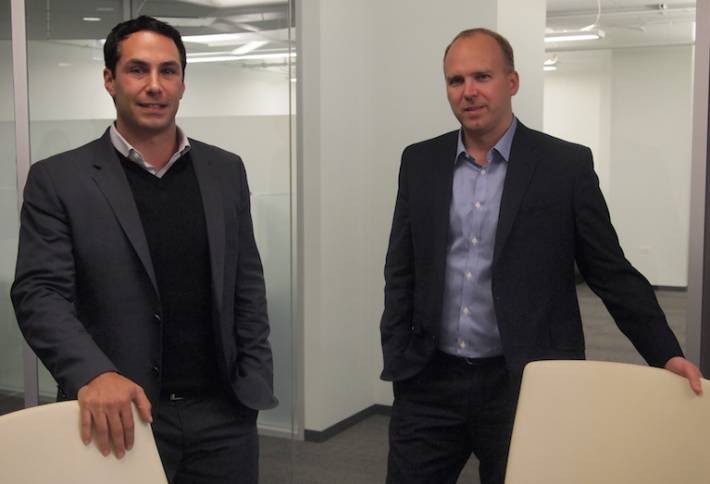Private Firms Use ClosedEnd Funds To Tap the Market
Post on: 24 Апрель, 2015 No Comment

By GERALDINE FABRIKANT
Published: April 17, 2004
Small investors can now buy a piece of a fund with the cachet of Apollo Advisors’ founder, Leon D. Black, and Kohlberg Kravis Roberts’s Henry Kravis — at a steep price.
Apollo, the Blackstone Group, K.K.R. and other private equity firms that have been the domain of wealthy individuals and institutions are rushing to tap the public markets through closed-end mutual funds.
Apollo raised $930 million last week to start a fund that will lend money to companies with revenue of $50 million to $500 million. The vehicle is being promoted to investors looking for a high yield in the current low-rate environment.
»Everybody in the private equity business is talking about it,» another private equity investor said. »I’ve had about 25 e-mails asking if I was going to start one of my own.»
The closed-end fund, which was offered at $15 a share, closed yesterday at $14.44 a share in Nasdaq trading under the symbol AINV. Closed-end funds can trade at a premium to their underlying value or at a discount.
Similarly, Blackstone has filed a registration to offer up to $850 million in a new closed-end fund called Blackridge Investment. and K.K.R. has made an initial filing to create a fund of up to $750 million. While Apollo will manage its fund, K.K.R. has not yet identified the manager.
Private firms like Apollo and K.K.R. do not make their returns public, but they have generally done quite well, some big investors say. Each, though, has had its share of setbacks. Ares Leverage Investment Fund L.P. which was begun by Apollo seven years ago, ran into problems in the collateralized debt market, for example. Since then, that fund has been spun off from Apollo.
The closed-end format allows private equity firms to raise money quickly. It also gives them permanent capital. Typically, a private equity fund has a three-year investment period and after that the fund is liquidated and the investments are sold.
Though there are no other comparable public funds, the Apollo fund carries high fees, according to at least four people who compared the offering with private funds. For starters, it allocated $58 million, or 6.25 percent, of the $930 million raised to pay underwriters.
While a person close to Apollo noted that the fee is standard for initial public offerings, several experts in alternative investments pointed out that wealthy investors could find vehicles like hedge funds without that upfront cut. Now that the fund has begun trading, a buyer can purchase it in the open market at standard brokerage commissions.
But Apollo is less like a mutual fund and more like a hedge fund in fees. It charges an annual management fee of 2 percent and takes 20 percent of any profits. Unlike most hedge funds, Apollo will base its management fee on total assets, including borrowed capital, according to the prospectus.
Because Apollo will keep $871 million after paying out sales fees, it will be owed $17 million in management fees the first year. And if the fund were to borrow $871 million more to invest, its fee would double to $34 million. (Government regulations prohibit the fund from any more leverage.)
Although Apollo declined to comment, a person close to the venture said that from a manager’s perspective, the fees were justified whether Apollo used equity or debt for capital.
However, several private equity and hedge fund managers said that they found the fee structure »aggressive.»
As to incentive fees, investors keep the first 7 percent in interest income generated by the fund, and then the managers can take their 20 percent of the profits. That hurdle rate is at the low end of the 7 to 9 percent range common for private equity and hedge funds.
With interest rates so low, 7 percent looks very attractive to some.
As one hedge fund manager noted, »There is a lot of money out there chasing returns at a time when interest rates are low and the stock market is relatively expensive.»
But if interest rates were to rise from their historically low levels, such returns would be available elsewhere. In coming years, Apollo could buy a 10-year government bond, for example, and get 20 percent of any profits over 7 percent, the hedge fund manager pointed out.
The Apollo fund also keeps 20 percent of the profits from capital gains, as is typical of hedge funds.
Though institutions eager for high yields and liquidity snapped up the Apollo offering, competitors will soon introduce their own funds. As more money pours into the sector, it could become harder to realize the anticipated returns.
Those eager to mimic K.K.R.’s returns may be disappointed as well. Joseph A. Dear, executive director for the Washington State Investment Board, which invests the state’s retirement fund, said it had invested in all of K.K.R.’s funds since 1982 for a net annualized return of 16.5 percent. The 1987 fund, however, has been somewhat disappointing, a person close to the fund said.
Furthermore, the publicly traded K.K.R. fund will use the firm’s philosophy to create a diversified portfolio that does not compete with K.K.R.’s other funds, according to the prospectus.
Photo: Leon D. Black, the founder and principal of Apollo Advisors, has started a closed-end mutual fund. (Photo by Bloomberg News)














